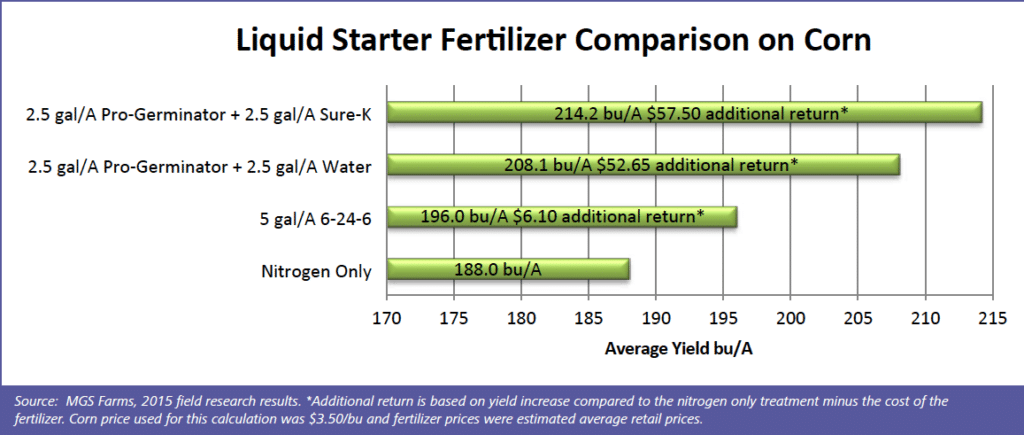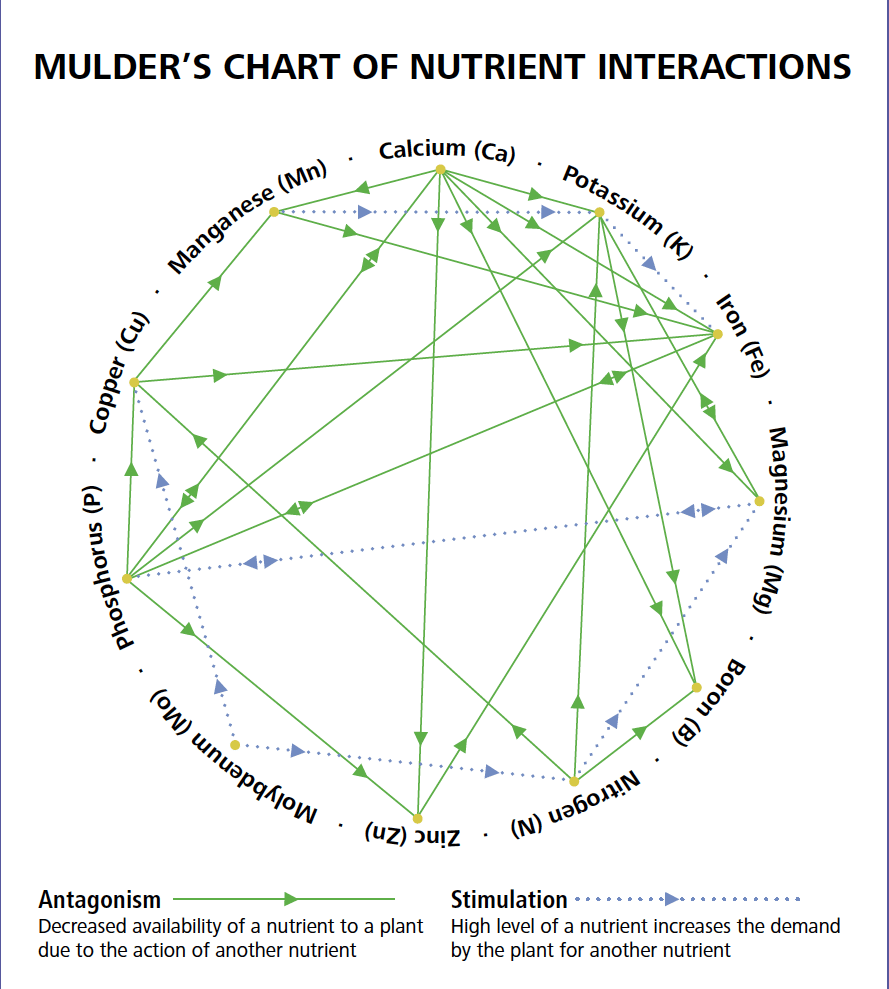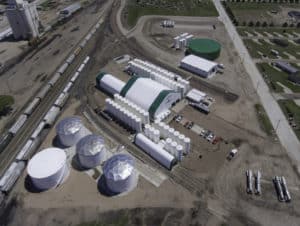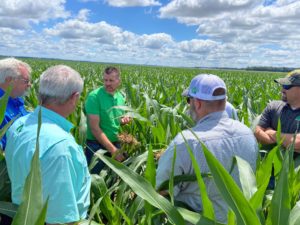A big challenge for growers is making the best use of financial resources, but not cutting inputs that will make money. Let’s take a look at the top eight ways you can help find what nutrients your crops need, plus how you can find the right fertilizer to help them thrive.
1. Soil Tests
Soil testing allows the grower to determine the current condition of the soil, including imbalances, deficiencies, and excesses. Soil tests also help identify how much nutrition is already available in the soil so that fertilizer applications can be optimized. A multi-year testing program allows the grower to monitor changes in the soil over time.
Yes, soil testing does cost money, but you get a complete test that includes soil characteristics, nutrient levels, and base saturation. However, if one soil sample represents 20 acres in a field and the field is sampled every three years, the cost of soil sampling averages out over time. Not a bad investment, considering the amount of information received from that test.
Simply applying the same fertilizer mix you have always applied may not provide the best production or economic return. A soil test report can be used to develop a complete nutrient management program for a field, including soil amendments to adjust nutrient imbalances as well as determine the fertilizer application needs for the crop. Using products that can be mixed to address the needs of a field will provide the best opportunity for economic return.

An excellent example of using soil test information to optimize crop nutrition choices is a field experiment conducted by MGS Farms (formerly AgroSpray Research Farm) near Innerkip, Ontario. The soil test report for the field showed low levels of both phosphorus and potassium. A common, standard program in the area is an application of 5 gallons/acre of 6-24-6 liquid fertilizer that provides phosphorus and a small amount of potassium. That treatment was compared to 2.5 gallons/acre of Pro-Germinator to meet the phosphorus need or 2.5 gallons per acre each of Pro-Germinator and Sure-K to meet the phosphorus and potassium need. Addressing the phosphorus and potassium need as indicated by the soil test provided higher yield and higher net return compared to either no phosphorus or phosphorus fertilizer alone.
2. Understand Nutrient Interactions
In addition to selecting nutrients needed to grow the crop, a soil test report will show relationships among nutrients in the soil. If one nutrient is in excess, other nutrients may not be available to the crop, even if the values of those nutrients are high. An excellent example of this is manganese and iron. If the manganese level is higher than the iron level, there is a risk that iron will be less available to the crop and supplemental iron nutrition is recommended. Excess levels of calcium can reduce the availability of several nutrients, including phosphorus, potassium and manganese, among others.
Mulder’s Chart of Nutrient Interactions graphically describes how some of these nutrient interactions work. Understanding these interactions can help dramatically in choosing the best nutrients and the best fertilizers for your crops.
3. Tissue Tests

Keep in mind that the plant analysis is just a snapshot of the nutritional status of the plant. Because plant physiology is dynamic, it is necessary to compare plant analysis results with what we expect to see in a plant at that growth stage.
4. Recognize Patterns
Once a nutrient deficiency is identified, you have to decide the next best step. First, look for patterns in the field. Is the deficiency related to a drainage issue? Are there inconsistencies with the planter fertilizer application? It’s important to consider all factors to make an informed decision.
Depending on the deficiency, foliar applications with liquid fertilizer is an effective method for quickly solving nutrient problems appearing in many plants. Since it is applied directly to plant leaves and absorbed through the plant’s stoma, foliar applications can move quickly through the plant’s leaves into the plant, improving health of the crop and yield.
5. Find the Right Fertilizer
There are many factors to consider when structuring a nutrient management plan. The foundation of a good fertilizer is using raw materials that don’t contain things that are harmful to plants. AgroLiquid uses the highest quality raw materials and puts them together in a clean formulation that is safe for the plant. We eliminate harmful bi-products that can cause crop injury and use proprietary formulation technology that improves uptake and utilization of our products within the plant. Those things together create high quality, efficient fertilizer products.
Another important consideration in choosing fertilizer is compatibility. Regardless of the reason, taking extra passes over the field to apply fertilizer is not an efficient use of resources. AgroLiquid products can be effectively applied at planting, side-dress, or foliar– when a pass will be taken over the field, anyway. In fact, AgroLiquid’s seed-safe formulations and chelation technology are representative of our commitment to generating the maximum crop response from applications of fertilizer. In addition, AgroLiquid has unmatched compatibility with most crop protection products and the full range of other AgroLiquid nutrients.
6. Focus on Research
Intensive research, development, and product testing have resulted in a full range of nutrient products that don’t solely focus on N-P-K. These nutrients work in harmony with phosphorous to make uptake, translocation, and utilization in the plant more efficient. This equates to more plant growth with less applied fertilizer. AgroLiquid employs this philosophy in products such as Pro-Germinator®, which uses a blend of phosphate, nitrogen, potash, and iron to maximize crop response at critical growth stages.
With over 25 years of scientific research completed at AgroLiquid’s North Central Research Station (NCRS), in addition to countless trials through contract researchers and grower field comparisons throughout the country, no other crop fertility product is more researched.
 7. Find an Expert
7. Find an Expert
If you are a producer facing the prospect of investing significantly in crop nutrition, it can be uncomfortable leaving a recommendation to someone’s good judgement. That’s why it is important to work with people who are committed to crop nutrition. Backed by years of research, AgroLiquid’s highly trained sales and agronomy team is skilled at helping growers make these management decisions. Beyond that, AgroLiquid partners with ag retailers who are dedicated to helping growers develop efficient and economical crop nutrition plans.
Talk with our experts about your crop nutrition plan: Contact us
8. Invest Your Time
It’s important to invest the time to listen to your crops. Recognizing these nutrient deficiencies not only benefit your crop nutrition plan, it helps ensure the return on investment of all inputs, including seed, fuel, crop protection, as well as fertilizer.
As always, if your crop is not reaching its full potential, or the same problems keep appearing, contact your crop nutrition expert to help investigate potential nutrient deficiencies. We’re here to help you develop a crop nutrition plan to meet your yield goals.




 7. Find an Expert
7. Find an Expert